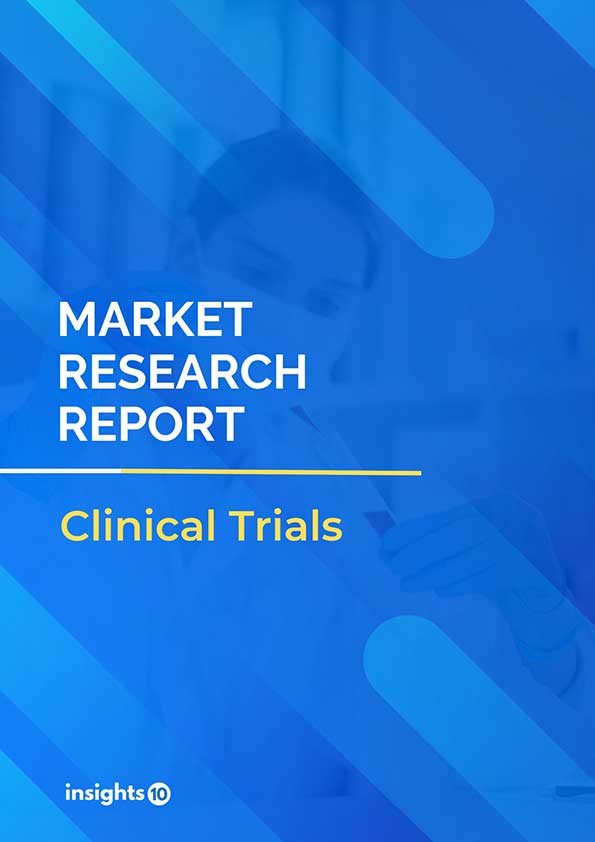Poland Palliative Care Market Analysis
The Poland Palliative care market is projected to grow from $75.86 Mn in 2022 to $xx Mn by 2030, registering a CAGR of xx% during the forecast period of 2022 - 2030. The main factors driving the growth would be an increase in the prevalence of chronic diseases, an aging population, and palliative care education. The market is segmented by service type and by the end user. Some of the major players include Caritas Pflege, Hospice Vorarlberg, St. Lazarus Hospice, and Warsaw Hospice for Children.
Buy Now

Poland Palliative Management Market Executive Summary
The Poland Palliative care market is projected to grow from $75.86 Mn in 2022 to $xx Mn by 2030, registering a CAGR of xx% during the forecast period of 2022 - 2030. Poland's national healthcare spending as a share of GDP in 2019 was 6.45% or $1,014 per person. In the past ten years, Poland has regularly spent less on health than the average EU nation, both in terms of per-capita spending and as a proportion of GDP.
When a patient or a member of the patient's family has a life-threatening illness, palliative care is used to treat them. By identifying and treating pain as well as other physical, mental, and spiritual issues as soon as possible, palliative care services seek to prevent and alleviate suffering. Palliative care also offers patients and their careers support through a team-based approach. Assist patients, and lead as active a life as possible up until their death, this requires resolving practical needs and creating a support system. Palliative care is needed for a variety of chronic conditions, including cardiovascular diseases, cancer, chronic respiratory illnesses, diabetes, kidney failure, chronic liver disease, and others.
The European palliative care industry will boost with increased research and development. The development of alternative models that make use of interdisciplinary teams will soon open up new revenue streams for the European palliative care sector.
Market Dynamics
Market Growth Drivers
The Poland palliative care market is expected to be driven by factors such as an increase in the prevalence of chronic diseases, an aging population, and palliative care education. In order to enhance the abilities of medical professionals in providing palliative care services, there has been a growth in the number of palliative care education programs in Poland.
Market Restraints
The number of patients who can obtain specialized care is limited in Poland due to a lack of trained palliative care professionals. Additionally, access to specialist treatment is not equally dispersed across the nation's rural areas due to the lack of palliative care facilities there. This might be ascribed to a lack of expertise and inadequate infrastructure in these regions, which restricts the market's expansion.
Competitive Landscape
Key Players
- Caritas Pflege (POL)
- Hospice Vorarlberg (POL)
- St. Lazarus Hospice (POL)
- Warsaw Hospice for Children (POL)
Healthcare Policies and Regulatory Landscape
Poland's residents have access to palliative care treatments as part of its comprehensive public healthcare system. Numerous healthcare organizations, such as hospitals, hospices, and home care agencies, offer palliative care.
The National Palliative Care Program and the Act on the Patients' Rights and Ombudsman for Patient Rights are some of the laws and policies the Polish government has created to assist the creation and delivery of palliative care services. These regulations seek to expand access to palliative care, raise the standard of care, and encourage the education of medical professionals in the field. The Ministry of Health, which is in charge of establishing national healthcare policy and standards for the delivery of care, is in charge of overseeing the regulatory environment for palliative care in Poland.
Reimbursement Scenario
Palliative care services are provided free of charge to all people of Poland under the umbrella of the country's public healthcare system. The National Health Fund (NFZ), which oversees the financing and reimbursement of healthcare services, offers compensation for palliative care services. The national health insurance system pays for hospice care as well as specialist palliative care services offered by hospitals and other healthcare facilities. Municipalities frequently offer home-based palliative care services and pay for them with local taxes.
1. Executive Summary
1.1 Service Overview
1.2 Global Scenario
1.3 Country Overview
1.4 Healthcare Scenario in Country
1.5 Healthcare Services Market in Country
1.6 Recent Developments in the Country
2. Market Size and Forecasting
2.1 Market Size (With Excel and Methodology)
2.2 Market Segmentation (Check all Segments in Segmentation Section)
3. Market Dynamics
3.1 Market Drivers
3.2 Market Restraints
4. Competitive Landscape
4.1 Major Market Share
4.2 Key Company Profile (Check all Companies in the Summary Section)
4.2.1 Company
4.2.1.1 Overview
4.2.1.2 Product Applications and Services
4.2.1.3 Recent Developments
4.2.1.4 Partnerships Ecosystem
4.2.1.5 Financials (Based on Availability)
5. Reimbursement Scenario
5.1 Reimbursement Regulation
5.2 Reimbursement Process for Services
5.3 Reimbursement Process for Treatment
6. Methodology and Scope
Palliative Care Market Segmentation
By Service Type (Revenue, USD Billion):
Based on service type, the Poland palliative care market is divided into the following:
- Private residence care
- Hospice inpatient care
- Hospital inpatient care
- Nursing home and residential facility care
- Others
By End User (Revenue, USD Billion):
Based on end-user type, the Poland palliative care market is divided into the following:
- Hospitals
- Home Care Settings
- Palliative Care Centers
- Long-Term Care Centers & Rehabilitation Centers
Methodology for Database Creation
Our database offers a comprehensive list of healthcare centers, meticulously curated to provide detailed information on a wide range of specialties and services. It includes top-tier hospitals, clinics, and diagnostic facilities across 30 countries and 24 specialties, ensuring users can find the healthcare services they need.
Additionally, we provide a comprehensive list of Key Opinion Leaders (KOLs) based on your requirements. Our curated list captures various crucial aspects of the KOLs, offering more than just general information. Whether you're looking to boost brand awareness, drive engagement, or launch a new product, our extensive list of KOLs ensures you have the right experts by your side. Covering 30 countries and 36 specialties, our database guarantees access to the best KOLs in the healthcare industry, supporting strategic decisions and enhancing your initiatives.
How Do We Get It?
Our database is created and maintained through a combination of secondary and primary research methodologies.
1. Secondary Research
With many years of experience in the healthcare field, we have our own rich proprietary data from various past projects. This historical data serves as the foundation for our database. Our continuous process of gathering data involves:
- Analyzing historical proprietary data collected from multiple projects.
- Regularly updating our existing data sets with new findings and trends.
- Ensuring data consistency and accuracy through rigorous validation processes.
With extensive experience in the field, we have developed a proprietary GenAI-based technology that is uniquely tailored to our organization. This advanced technology enables us to scan a wide array of relevant information sources across the internet. Our data-gathering process includes:
- Searching through academic conferences, published research, citations, and social media platforms
- Collecting and compiling diverse data to build a comprehensive and detailed database
- Continuously updating our database with new information to ensure its relevance and accuracy
2. Primary Research
To complement and validate our secondary data, we engage in primary research through local tie-ups and partnerships. This process involves:
- Collaborating with local healthcare providers, hospitals, and clinics to gather real-time data.
- Conducting surveys, interviews, and field studies to collect fresh data directly from the source.
- Continuously refreshing our database to ensure that the information remains current and reliable.
- Validating secondary data through cross-referencing with primary data to ensure accuracy and relevance.
Combining Secondary and Primary Research
By integrating both secondary and primary research methodologies, we ensure that our database is comprehensive, accurate, and up-to-date. The combined process involves:
- Merging historical data from secondary research with real-time data from primary research.
- Conducting thorough data validation and cleansing to remove inconsistencies and errors.
- Organizing data into a structured format that is easily accessible and usable for various applications.
- Continuously monitoring and updating the database to reflect the latest developments and trends in the healthcare field.
Through this meticulous process, we create a final database tailored to each region and domain within the healthcare industry. This approach ensures that our clients receive reliable and relevant data, empowering them to make informed decisions and drive innovation in their respective fields.
To request a free sample copy of this report, please complete the form below.
We value your inquiry and offer free customization with every report to fulfil your exact research needs.










































